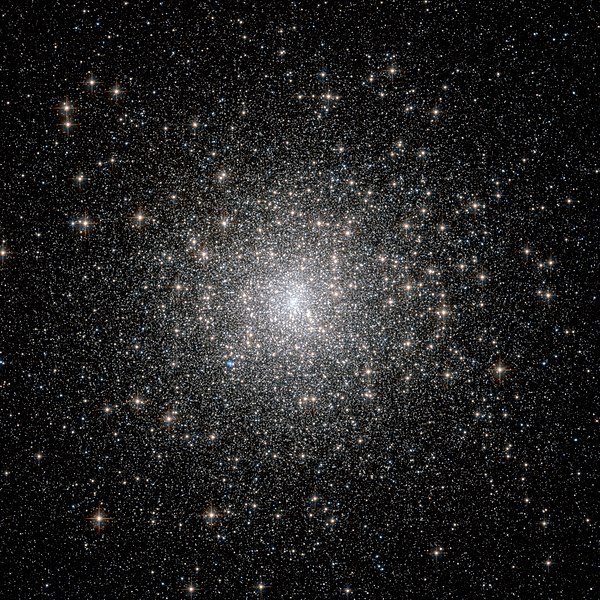Lêer:Messier 15 HST.jpg

Grootte van hierdie voorskou: 600 × 600 piksels. Ander resolusies: 240 × 240 piksels | 480 × 480 piksels | 768 × 768 piksels | 1 024 × 1 024 piksels | 2 048 × 2 048 piksels | 4 089 × 4 089 piksels.
Oorspronklike lêer (4 089 × 4 089 piksels, lêergrootte: 4,55 MG, MIME-tipe: image/jpeg)
Lêergeskiedenis
Klik op die datum/tyd om te sien hoe die lêer destyds gelyk het.
| Datum/Tyd | Duimnael | Dimensies | Gebruiker | Opmerking | |
|---|---|---|---|---|---|
| huidig | 09:42, 4 Mei 2011 |  | 4 089 × 4 089 (4,55 MG) | Originalwana | higher res |
| 21:12, 18 Februarie 2011 |  | 1 280 × 1 280 (721 KG) | Jmencisom | {{Information |Description ={{en|1=The dazzling stars in Messier 15 look fresh and new in this image from the NASA/Hubble Space Telescope, but they are actually all roughly 13 billion years old, making them some of the most ancient objects in the Unive |
Lêergebruik
Die volgende bladsy gebruik dié lêer:
Globale lêergebruik
Die volgende ander wiki's gebruik hierdie lêer:
- Gebruik in ca.wikipedia.org
- Gebruik in ce.wikipedia.org
- Gebruik in cs.wikipedia.org
- Gebruik in de.wikipedia.org
- Gebruik in diq.wikipedia.org
- Gebruik in en.wikipedia.org
- Gebruik in en.wikiversity.org
- Gebruik in eo.wikipedia.org
- Gebruik in eu.wikipedia.org
- Gebruik in fr.wikipedia.org
- Gebruik in gd.wikipedia.org
- Gebruik in id.wikipedia.org
- Gebruik in it.wikipedia.org
- Gebruik in it.wikibooks.org
- Gebruik in ja.wikipedia.org
- Gebruik in ko.wikipedia.org
- Gebruik in mg.wikipedia.org
- Gebruik in ml.wikipedia.org
- Gebruik in ms.wikipedia.org
- Gebruik in nds.wikipedia.org
- Gebruik in nl.wikipedia.org
- Gebruik in no.wikipedia.org
- Gebruik in pl.wikipedia.org
- Gebruik in pt.wikipedia.org
- Gebruik in ru.wikipedia.org
- Gebruik in simple.wikipedia.org
- Gebruik in sl.wikipedia.org
- Gebruik in tr.wikipedia.org
- Gebruik in tt.wikipedia.org
- Gebruik in uk.wikipedia.org
- Gebruik in www.wikidata.org
- Gebruik in zh-yue.wikipedia.org
- Gebruik in zh.wikipedia.org

